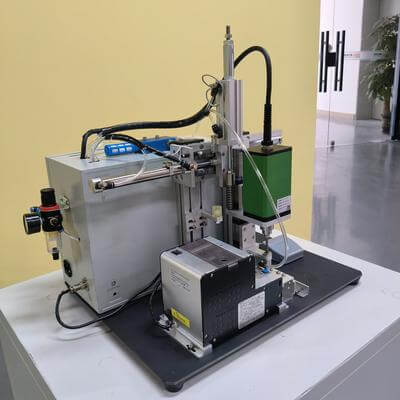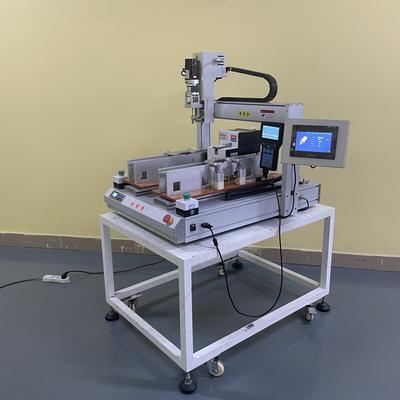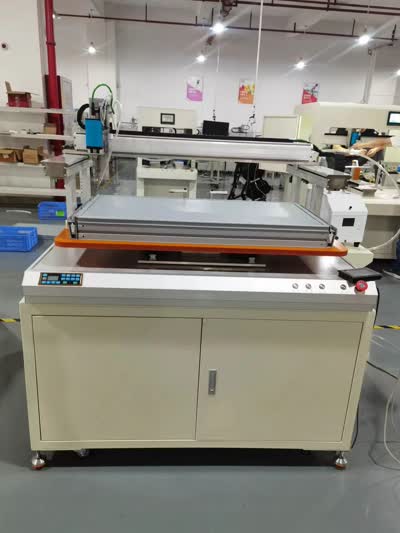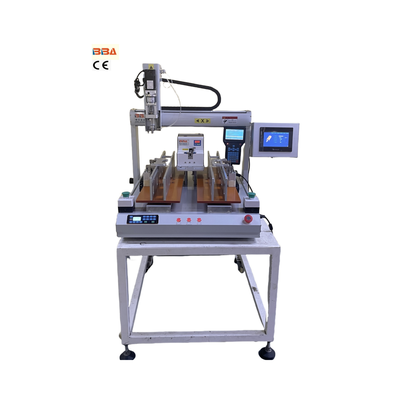Multi-Axis Tightening for Battery Pack Assembly | Precision Automation

| Product Name | Applicable industries |
| Screw Fastening Unit | Telecommunication Equipment Assembly |
As industries worldwide continue to embrace automation for enhanced precision and scalability, the assembly of battery packs has emerged as a critical process requiring meticulous attention. The demand for reliable and high-performance battery packs, particularly in sectors like electric vehicles, consumer electronics, and renewable energy storage, underscores the need for advanced assembly techniques. One such technique gaining prominence is multi-axis tightening, a method that ensures superior consistency, safety, and efficiency in battery pack manufacturing.
Battery packs consist of numerous components, including cells, busbars, connectors, and housing elements, all of which must be securely fastened to guarantee optimal performance and longevity. Traditional tightening methods, often manual or single-axis automated systems, can lead to inconsistencies in torque application, resulting in uneven pressure, potential loosening over time, or even damage to sensitive components. These issues can compromise the safety and reliability of the battery pack, leading to failures or reduced lifespan.
Multi-axis tightening systems address these challenges by utilizing multiple robotic or automated arms equipped with precision torque drivers. These systems can simultaneously tighten multiple fasteners at various angles and positions, ensuring uniform torque distribution and exact adherence to specifications. This simultaneous tightening eliminates sequential errors—where tightening one fastener might affect the tension of others—and enhances the structural integrity of the assembly.
The benefits of multi-axis tightening are substantial. First, it significantly improves product quality by minimizing human error and variability. Each fastener is tightened to exact predefined torque values, reducing the risk of over-torque or under-torque scenarios. This precision is crucial for maintaining electrical connections within the battery pack, as loose connections can lead to arcing, overheating, or energy loss. Moreover, consistent tightening helps in maintaining the mechanical stability of the pack, which is vital for withstanding vibrations, thermal expansions, and other operational stresses.
Secondly, multi-axis tightening enhances production efficiency. By automating the process and handling multiple fasteners at once, assembly times are drastically reduced. This acceleration is particularly valuable in high-volume manufacturing environments where throughput is a key metric. Additionally, these systems often integrate with real-time monitoring and data logging capabilities, allowing manufacturers to track each tightening operation for quality assurance and traceability. This data can be used for predictive maintenance, process optimization, and compliance with industry standards.
Safety is another critical advantage. Battery packs involve high-energy densities and hazardous materials, making any assembly defect a potential safety risk. Multi-axis tightening systems reduce such risks by ensuring that all components are securely fastened, minimizing the chances of short circuits, thermal runaways, or leakage. The automated nature of these systems also enhances workplace safety by reducing manual handling and repetitive tasks for operators.
Implementing multi-axis tightening in battery pack assembly requires careful consideration of system design, including the selection of appropriate torque tools, robotic controllers, and software integration. Modern systems are often customizable to accommodate various pack geometries and sizes, making them adaptable to evolving product designs. As battery technology continues to advance, with trends like solid-state batteries and modular packs gaining traction, the role of precise and efficient assembly methods will only grow in importance.
In conclusion, multi-axis tightening represents a significant leap forward in battery pack assembly, offering unparalleled precision, efficiency, and safety. By leveraging this technology, manufacturers can meet the increasing demands for high-quality energy storage solutions while optimizing their production processes. As industries continue to innovate, embracing such advanced automation techniques will be key to staying competitive and ensuring reliable performance in the products of tomorrow.


